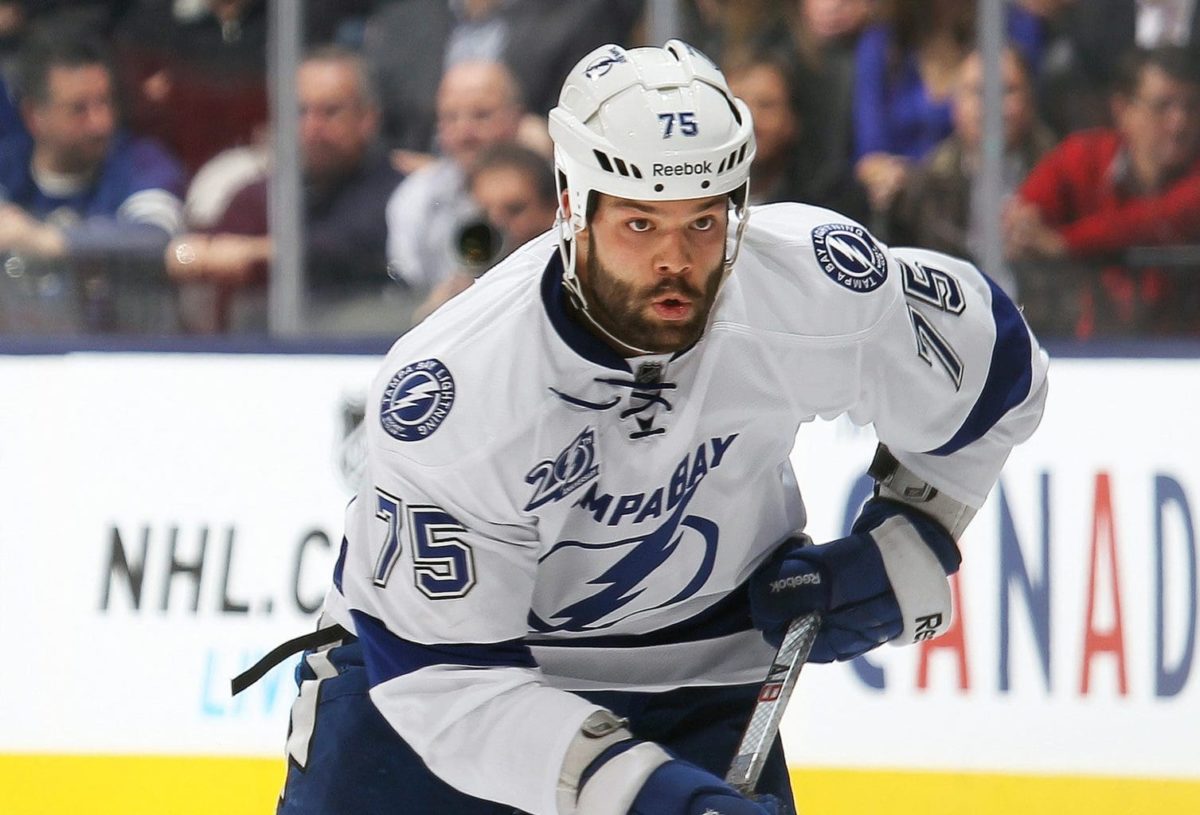We often hear hockey analysts talk about playing physical. Coaches have also been known to use the phrase. Among the innumerable cliché’s in today’s game, we often hear, “We needed to play a more physical game.” The word “grit” is also intertwined with physicality. Toronto Maple Leafs general manager Kyle Dubas was berated by fans because his team was not hard enough to play against. As a result, he acquired Zach Bogosian and Wayne Simmonds to boost the physical presence in his lineup. Demands like these spring me to action.
Big fights, blood on the ice, bench-clearing brawls, and massive hits are staples from a bygone era. Players like Scott Stevens, Marty McSorley, Tie Domi, Niklas Kronwall, Brooks Orpik, and others defined the term “physical.” However, with a growing emphasis on player safety and speed and skill rather than size, physical play in the NHL has dwindled. Some general managers and executives still approach the game with toughness as their priority; executives like Pittsburgh Penguins president Brian Burke. Others, however, focus more on skill than height and weight. Before the 2019-20 offseason, Dubas was an excellent example of this.

The mindset surrounding physical play has slowly changed within front offices around the league, but the consensus among fans seems stagnant. We often hear player evaluations from traditionalist fans involving time on ice, plus-minus, physicality, and grit. A player like Seth Jones, for example, is lauded for his physical game and ice time, despite not being the best statistically or even by the eye test in some cases.
He doesn’t put up great analytical or box score numbers but is treated as a top 5-10 defenseman in the NHL because of general physical play and playing a lot. It’s just one example of the flaws surrounding NHL player evaluation among fans. The question is: what kinds of physicality are more beneficial and where does that fit in today’s NHL? Luckily, you’ve come to the right place for that analysis.
What Is Physicality’s Place in the NHL?
Before I dive any deeper, I would like to preface that I love a physical hockey game. Teams going back and forth with each other, wearing down the opposition through hard play, is what makes hockey as unique as it is. The sport is a constant battle, both mentally and physically. Now, to the question. Not only does physicality have its place in winning, but it contributes to the overall fan experience as well.
When I talk to non-hockey fans or casual fans that don’t pay attention to the intricacies much, the one thing that hockey is known for is the fights and the massive hits. While highlight goals are attractive to some, scrolling through YouTube after searching for “hockey,” it is abundantly clear that hits are the more interesting of the two options. There is something animalistic about hockey hits that appeal to the brain, which I infer would be why they’re so popular.
Now, let’s visit the idea of physicality and its place in the NHL. Playing a physical game, especially in the postseason, has proven to assist in winning the ultimate prize. Teams that can wear down the opponents while maintaining strong puck possession are most consistently threatening. Coming up to the faceoff circle and lining up next to Tom Wilson, a supremely skilled bruiser that enjoys nothing more than punishing his opponents, does not sound like an enjoyable option.
Even a guy like Ryan Reaves, who is less skilled than Wilson and exclusively plays a fourth-line grinder role, is an opponent most would not be happy matching up with during a game. Any time your team, from a general manager, coach, or player perspective, is physically imposing, there is a significant advantage that not all teams have the luxury of owning.
Smart Physicality and Why it’s Important
Hockey is a very layered game. On the surface, it’s a bunch of players with two common goals: put the puck in the net and don’t let the puck go in yours. Dive even deeper, and we become enveloped in puck movement and how it is affected by physical play and good old-fashioned puck luck. Even further is the land of systems and data, all of which encompass breakouts, zone entries, different types of passes, expected goals, and much more. Most wouldn’t think twice about the different ways physical play can be applied, both in systems and on an individual level. However, the various aspects are what make it an essential part of the game.
Physicality, while it has its uses, is not something that should be black and white. A player that plays a physical role can often get caught up in the hitting mindset and throw themselves out of position. Former Nashville Predator Austin Watson comes to mind. One major problem with his game, other than outright not being a great player relative to his peers, was his consistent finishing of checks that put him out of position in the defensive or neutral zone. He would often be defending the rush or tracking a player in his own zone, throwing a hit, and, consequently, opening a lane to the slot or middle of the ice for easy zone penetration.
Defenders like Erik Gudbranson, Jack Johnson, Radko Gudas, Tyler Myers, and Zach Bogosian are other culprits of finishing checks that ultimately put them out of position. A player like Gudas is interesting because, while he does chase hits, he still gets good defensive results in terms of preventing high-danger chances. Whereas the other defenders mentioned, especially Gudbranson, Johnson, and Myers, don’t put up good defensive numbers at all.

The most common play among all of those defenders is finishing a check along the half wall or corner boards that end up keeping them from the front of the net. I wrote a piece on Predators prospect David Farrance and talked about his shortcomings in the defensive zone. One of his problems was putting himself out of position when it comes to in-zone defending. His was less of a hitting standpoint and more of a positioning one, but the same philosophy holds. No player is effective when they’re putting themselves out of passing lanes to finish checks. Whether it’s Victor Hedman or the aforementioned Johnson, a primary job of a defenseman is to, you guessed it, play defense.
This juncture is where smart physicality comes into play. Most could define smart physicality as not putting yourself out of position for the sake of a hit. Essentially, not sacrificing your positioning to make a hit that could leave your teammates at a disadvantage but still using your body to force the puck away from oncoming players. This kind of physicality is one of the most underrated strategies in hockey. We, as fans, get the best of both worlds! Not only do we get effective defense and limited high-quality chances against, but we also get to see the puck knocked off player’s sticks and taken the other way because of wise body checking.
Which Players Are Good Representatives of “Smart” Physicality?
Now that I’ve talked about what smart physicality is, who exemplifies the idea? Which players are the crème de la crème of playing an intelligent physical game? The first player that comes to mind is Mark Stone. A player that could easily be a Hart Trophy candidate every year, Stone is excellent at forcing his body onto opponents and prying the puck loose from their grasp.
He is, of course, good at finessing through players, but the way he uses his stick in unison with his body is what makes him such a special player and a treat to watch. His game revolves around playing the game with the mind first, then putting the body into action. He thinks the game at such a high level, which is why his physical play extends beyond blindly hitting the opposition.
Another player that does this well is Philadelphia Flyers center Sean Couturier. Just like Stone, he uses his frame effectively to box out the opposing puck carrier, while simultaneously using his stick to play keep away and move the puck up the ice. He fights for pucks as much as anyone but wins more battles because he uses his frame to his advantage.

Both of these players might not be able to backcheck as fast as Connor McDavid, but instead, they use their almost unmatched hockey IQ to think the game two steps ahead. They contribute a mountain’s worth in physical play but might not be granted the title of “physical” by NHL analysts because they have less than gaudy hit totals.
My last example is a defenseman that epitomizes playing smart physically: Victor Hedman. The most identifiable of Tampa Bay’s blueliners, Hedman does pretty much everything well. He works well in space offensively; he plays strong defense with excellent stick positioning and a good gap, and finally, he plays a reserved but effective physical game. You often won’t find a smarter defenseman in every aspect of the game than him. When he’s in the defensive zone and nagging opposing players with the puck, he doesn’t leave his position for the sake of finishing a check. Instead, he will pressure and, depending on the scenario, either complete the check and work the puck loose or pressure and back off.
The NHL Needs a Mindset Change
Traditionalist or casual fans won’t change their minds unless the NHL changes it first. The perfect example of this is Adam Fox’s placement among defensemen around the league. Last year I and many others were ridiculed for having Fox as our Calder trophy winner. The same people, including myself, are now getting destroyed on social media for not having him as a top 10 defenseman in the NHL. This sudden change in opinion only came because the league’s social media decided to post him much more. He was making the same plays last year as he is this year, but the league hadn’t caught up with that yet because of his point totals.

Until the NHL and the people they hire decide to rethink how they approach the game, including player and team analysis, most casual fans will be raving about physical players in the general sense rather than players who are smart with how they throw their bodies around. Since casual fans make up the majority, it will be hard to change, but something necessary for the betterment of players and viewer enjoyment as well as knowledge of the game itself.
Smart physicality has its place in the NHL today. However, needless physicality should be eradicated from the minds of people that have a reach in the NHL community. The best players in the world are those that understand when to apply a hit and when to back off and play their position. As I mentioned earlier, there is a place for it from both a strategic and fan standpoint. Everyone loves to see a big hit. Now, imagine a world where big hits still happen, but not at the expense of good, positionally sound defense. It might just be me, but that sounds like fun.